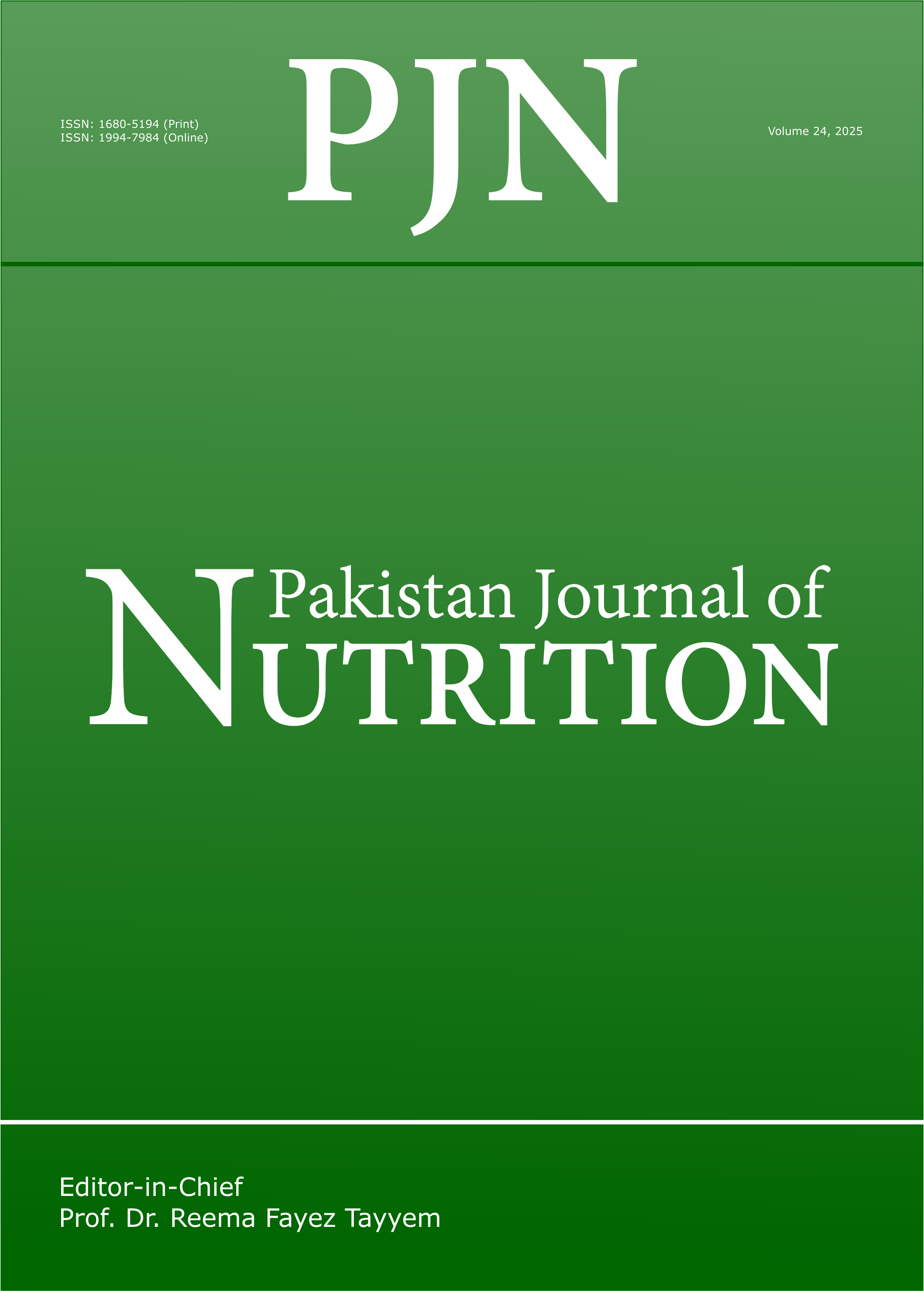Influence of Dietary Palm Oil on Growth Response, Carcass Composition, Haematology and Organoleptic Properties of Juvenile Nile Tilapia, Oreochromis niloticus
DOI:
https://doi.org/10.3923/pjn.2007.424.429Keywords:
haematology, oreochromis niloticus, palm oil, sensory evaluationAbstract
An 8-week feeding experiment was conducted to determine the effect of replacing fish (codliver) oil with palm oil at 0, 33.33, 66.67, 100 % for diets 1, 2, 3, 4 respectively, of Nile Tilapia, Oreochromis niloticus. Each diet was formulated to contain 28% crude protein and fed to triplicate groups of 10 juvenile Oreochromis niloticus (mean wt., 9.09g). Fish mortality decreased with increasing palm oil substitution level. There was a significant difference (P< 0.05) in the survival of fish fed Diet 4 compared with other treatments. The result showed that carcass quality of experimental fish was not compromised as a result of the use of palm oil in diets. Blood parameters of fish fed experimental diets showed a common trend, namely the higher the palm oil substitution level, the higher the blood parameters. Organoleptic properties of experimental fish showed that palm oil replacement for fish oil had no negative effect on their sensory evaluation and eating quality. The present study provides evidence that palm oil can effectively replace cod liver oil in diets for Nile Tilapia, O. niloticus.
Published
Issue
Section
License
Copyright (c) 2007 Asian Network for Scientific Information

This work is licensed under a Creative Commons Attribution 4.0 International License.
This is an open access article distributed under the terms of the Creative Commons Attribution License, which permits unrestricted use, distribution and reproduction in any medium, provided the original author and source are credited.

